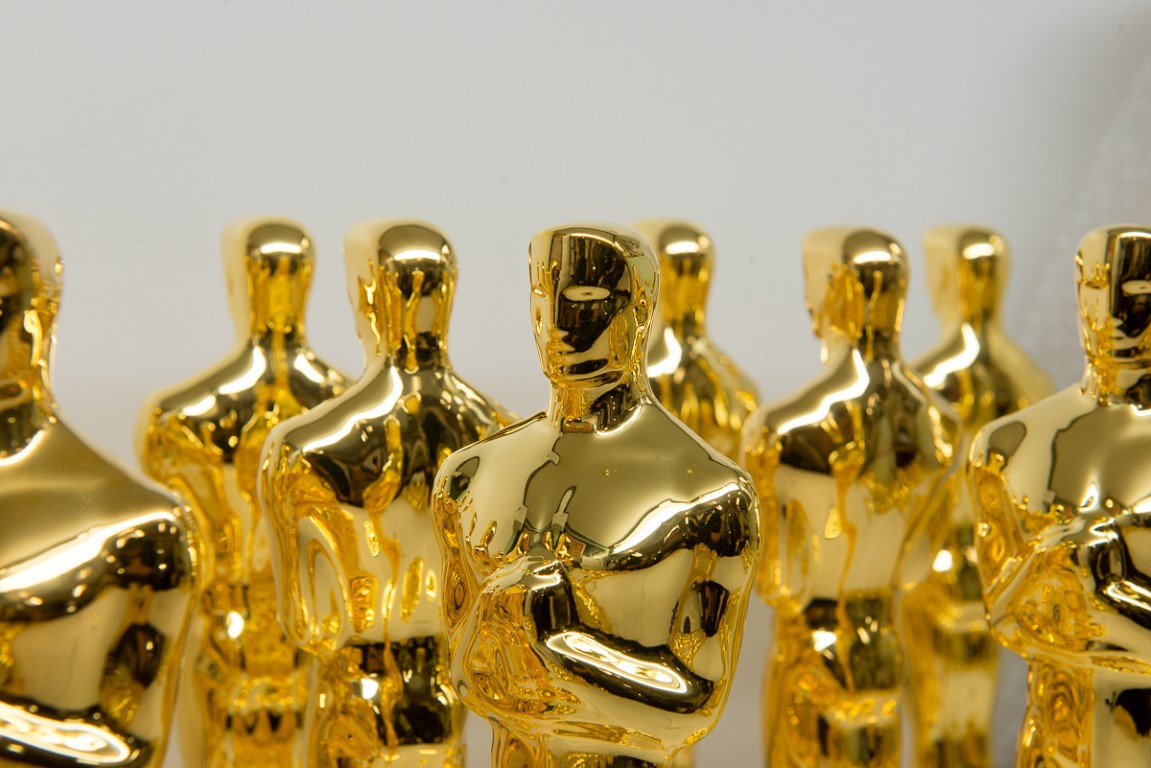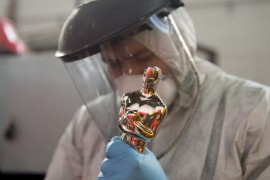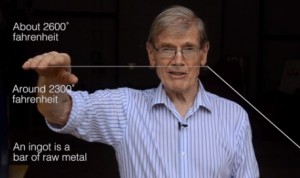Re-creating the Oscars: A Materials Science Story
-
-
slice.mit.edu
- 3
Filed Under
Recommended

When the 88th Academy Awards are presented Sunday night to honor outstanding films, the statuettes will be a little different. And that is thanks to a return to tradition—paired with 21st century materials science technology—in a project led by Richard Polich SM '65, who runs the fine arts foundry, Polich Tallix, in upstate New York.
Polich, who earned his MIT degree in metallurgy and worked with Professor Merton Flemings ’51, SM ’52, ScD ’54 at the MIT Foundry, was chosen by the academy because of his decades of successfully fabricating challenging projects from massive sculptures like Jeff Koons’ gleaming stainless steel Rabbit in 1986 to public monuments like the Korean War Veterans Memorial in Washington, DC, in 1995. He even built a 24-foot-tall bronze horse based on recently discovered sketches by Leonardo Da Vinci.

Over three months, Polich’s team has recreated the 50 statuettes beginning with digital scans of a 1929 statuette and a modern-era pedestal base. The item was then 3D-printed and molded so the form could be cast in wax. Each wax statuette was coated in a ceramic shell, which was cured and fired at 1,600°F, melting the wax away and leaving an empty Oscar-shaped form. The statuettes were then cast in liquid bronze at more than 1,800°F, cooled, and sanded to a mirror polish finish. Finally the figures were electroplated with 24-karat gold and black patina was applied to the bases.
Why start from 1929? By using an Oscar from that era, one year after the statuette was first created, Polich Tallix artisans are returning to the original cast bronze process. According to the academy, the handcrafted process—from making individual waxes to polishing—has restored subtle features of George Stanley’s original sculpture, which was based on sketches by MGM art director Cedric Gibbons, who himself won 11 Oscars. The size of the statuette remains at 13.5 inches tall, weighing in at 8.5 pounds.
See each stage of the process on the Polich Tallix website.
 In a video, Dick Polich explains the Heat of Fusion
In a video, Dick Polich explains the Heat of Fusion
To learn more about Polich’s work, check out a 26-minute video titled The Heat of Fusion: Transforming Metal into Art, that gives a metallurgist’s view of art making. The video was part of a museum exhibit documenting Polich’s career in art fabrication, including his appreciation of the different roles of artist and fabricator.
“As an engineer working with materials and structures, faced with a problem, I transform it into something I can tackle objectively, using the rules and laws of engineering. Artists, however, work from within themselves; their response to a problem is subjective, based on feelings and personal views, uninhibited by precedent,” Polich wrote.








Comments
Dr Danny Ha
Sun, 02/28/2016 9:21pm
Its a tough and honor work to retain all value of the statuettes all these years. We support you all the artists. Thank you.
Best regards
Dr Danny Ha,
Chairman,
The Best ERM Award, since 2015,
Academy of Professional Certification Ltd (Charitable NGO) 專業認証學院
Email dannyha@apc.org.hk
Visit http://www.apc.org.hk
annag
Sun, 02/28/2016 11:16am
I'm curious what those missing/restored details are.
Michael Golan
Thu, 02/06/2020 11:49am
How many MIT alums have Oscars?
I know one who has two. He spoke about movie sound to our alumni club and we took selfies with his Oscars https://www.technologyreview.com/s/600741/tom-scott-66/